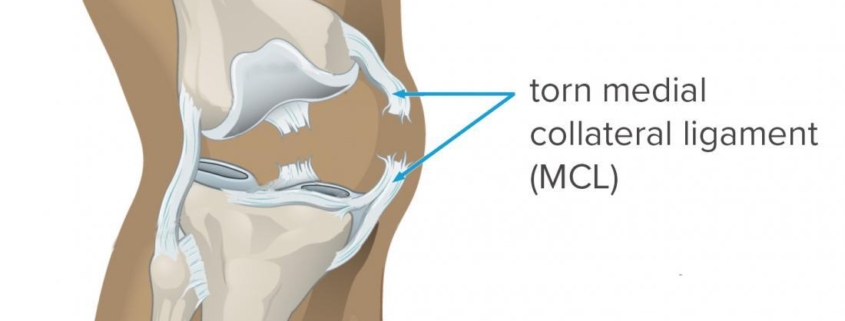Collateral Ligament Injuries

Overview
Collateral ligament injuries refer to damages to the ligaments located on the sides of your knee causing instability, pain, and potentially hindering your ability to walk. These ligaments aid in holding your knee joint together and provide stability. The condition is quite common, especially among athletes and individuals engaging in high-impact activities.
Types
There are two primary types of collateral ligament injuries based on the affected ligament:
1. Medial Collateral Ligament (MCL) Injuries: This injury affects the ligament on the inside part of the knee. It’s often caused by direct impact to the outside of the knee.
2. Lateral Collateral Ligament (LCL) Injuries: This injury occurs to the ligament on the outside part of the knee. It’s usually due to forceful impact to the inside of the knee.
Each injury can differ in severity from minor sprains to complete tears.
Causes
Collateral ligament injuries typically result from a blow to the knee, high-impact activity, or sudden shift in direction while the foot is planted on the ground. High-risk activities include football, skiing, soccer, and other sports involving lots of jumping, pivoting, or rapid change of direction.
Symptoms
The common symptoms associated with collateral ligament injuries include:
- Swift onset of pain
– Swelling of the knee
– Sensation of knee instability
– Difficulty in moving or bending the knee
– In severe cases, a popping sound at the time of injury
Diagnosis
This condition is usually diagnosed with a combination of physical examination and imaging tests. During the physical examination, your doctor will check your knee for apparent signs of injury and swelling, including palpating around the joint. This is often followed by a stress test, where the doctor applies pressure to the side of the knee to assess ligament strength and flexibility. Imaging tests such as X-ray or MRI may also be utilised to get a detailed view of the knee structure.
Treatment Options
Treatment for collateral ligament injuries can be either conservative or surgical, depending on the severity of the injury:
- Conservative treatment: This approach involves the use of RICE (Rest, Ice, Compression, Elevation), physical therapy, and occasionally knee bracing to stabilize the joint and promote healing. Medications for pain and inflammation may also be prescribed.
– Surgical treatment: In cases of severe ligament tears or if conservative treatment is ineffective, surgery might be the preferred approach. This usually involves repairing the torn ligament and in some cases, a ligament graft might be considered.
Living With Collateral Ligament Injuries
Living with a collateral ligament injury, especially during recovery, can be challenging, but certain tips can make the process easier:
– Regularly perform the exercises recommended by your physical therapists.
– Avoid activities that apply stress on your knee till the healing is complete.
– Take prescribed medications on time to control pain and reduce inflammation.
– Use knee braces as recommended to provide additional support.
When to Seek Help
If any of the following occurs, seek immediate medical attention:
– Severe pain prevents you from walking or bearing weight on the affected leg.
– You experience excessive knee swelling.
– The knee feels unstable or like it’s going to give out.
– You are unable to fully bend or straighten the knee.
Remember that early diagnosis and treatment could greatly improve your recovery chances and future knee functionality. Therefore, don’t hesitate to seek medical help when you feel it’s necessary.
